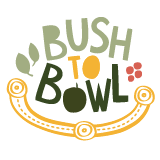
Honey Myrtle - Melaleuca thymifolia
Pickup available at Ingleside
Usually ready in 2-4 days

Honey Myrtle - Melaleuca thymifolia
Tubestock
Ingleside
12 Wilga Street
Ingleside NSW 2101
Australia
The Honey Myrtle, also known as Thyme Honey-myrtle (Melaleuca thymifolia), is a small, evergreen shrub native to eastern Australia. It typically grows to about 1-1.5 meters tall and wide, with dense, rounded foliage. The leaves are small and needle-like, about 1 cm long, and have a spicy, thyme-like aroma when crushed. The flowers are small and mauve to purple, borne in clusters at the ends of the branches. They bloom throughout the year, but most prolifically in spring and summer.
Uses:
- Ornamental: Honey Myrtle is a popular ornamental plant due to its compact size, attractive flowers, and drought tolerance. It can be used in borders, hedges, rockeries, or containers.
- Culinary: The leaves and flowers of Honey Myrtle can be used in cooking. The leaves can be infused in vinegar or oil to add a thyme-like flavor, while the flowers can be used to make a sweet syrup or jelly. The flowers also attract bees, so Honey Myrtle can be planted near beehives to produce honey with a unique flavor.
- Medicinal: Honey Myrtle has been used in traditional Aboriginal medicine for a variety of ailments, including coughs, colds, and wounds. However, there is no scientific evidence to support these uses.
Growing and caring:
Honey Myrtle is a relatively easy plant to grow. It prefers well-drained soil in full sun to part shade. It is drought tolerant once established, but will benefit from occasional watering during dry spells. It can be pruned to maintain its shape and size.
Height:
Honey Myrtle typically grows to about 1-1.5 meters tall.
Cooking uses:
The leaves and flowers of Honey Myrtle can be used in a variety of culinary dishes. Here are a few ideas:
- Infuse honey or vinegar with the leaves: To make thyme-infused honey, simply add a handful of fresh Honey Myrtle leaves to a jar of honey and let it steep for a few weeks. You can use this honey to glaze roasted vegetables, add to marinades, or enjoy on its own. To make thyme-infused vinegar, follow the same process but use vinegar instead of honey. This vinegar can be used in salad dressings, marinades, or to deglaze a pan.
- Use the flowers to make a syrup or jelly: The flowers of Honey Myrtle can be used to make a sweet syrup or jelly. To make syrup, simply simmer the flowers in water with sugar until the sugar dissolves. Strain the syrup and store it in the refrigerator. To make jelly, follow the same process but add pectin to the mixture.
- Add the leaves to soups and stews: The leaves of Honey Myrtle can be added to soups and stews for a thyme-like flavor. Simply add a handful of fresh leaves to the pot during the last few minutes of cooking.
- Use the flowers to garnish dishes: The flowers of Honey Myrtle can be used to garnish a variety of dishes, such as desserts, cocktails, and savory dishes.
Additional tips:
- When using Honey Myrtle in cooking, start with a small amount and add more to taste, as the flavor can be quite strong.
- Honey Myrtle is best used fresh, but it can also be dried and stored in an airtight container for later use.
- Be sure to identify the plant correctly before using it, as there are other plants that look similar but are not edible.


